 For the third year in a row the Center for Marketing Research at the University of Massachusetts Dartmouth has conducted an in-depth and statistically significant study on the usage of social media in fast-growing corporations. The study is titled, “Social Media in the 2009 Inc. 500: New Tools & New Trends.” I’m guessing agribusiness companies will follow this trend and it is a real trend since they now have good comparative data over several years. Here’s an excerpt from their report:
For the third year in a row the Center for Marketing Research at the University of Massachusetts Dartmouth has conducted an in-depth and statistically significant study on the usage of social media in fast-growing corporations. The study is titled, “Social Media in the 2009 Inc. 500: New Tools & New Trends.” I’m guessing agribusiness companies will follow this trend and it is a real trend since they now have good comparative data over several years. Here’s an excerpt from their report:
Social networking continues to lead the way. The technology that continues to be the most familiar to the Inc. 500 is social networking with 75% of respondents in 2009 claiming to be “very familiar with it” (compared to 57% in 2008). Another noteworthy statistic around familiarity is Twitter’s amazing “share of mind” with sixty-two percent of executives reported being familiar with the new microblogging and social networking platform.
The adoption curves for different social media technologies are not all the same.
Interestingly, while social networking and blogging have enjoyed growth in actual adoption, the use of message boards, online video, wikis and podcasting has leveled off or declined. The addition of Twitter (considered by respondents to be both a microblogging site and a social networking site) in the latest study shows that an amazing 52% of the Inc. 500 companies are already using this tool for their business.
Regardless of the particular technology, social media matters and is here to stay.
Forty-three percent of the 2009 Inc. 500 reported social media was “very important” to their business/marketing strategy. And an incredible 91% of the Inc. 500 is using at least one social media tool in 2009 (up from 77% in 2008). In addition, as they ramp up their usage, the Inc. 500 companies are also seeking to protect themselves legally, with 36% having implemented a formal policy concerning blogging by their employees.
Thanks to Podcasting News for the heads up.

 Let’s end the year with something new.
Let’s end the year with something new. 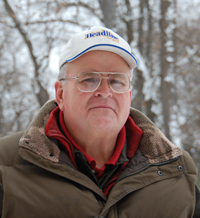 This week we traveled to northern Illinois where there is still lots of corn in the fields and lots of flooded areas due to the extremely wet fall. I talked with Ron Hansen of Kankakee, who still has about 300 acres to combine, but he says it is still standing pretty well, despite a storm that blew through last week with 40 mph winds. It helped him see a side by side comparison of how Headline helped with standability in this late year. “We had a check on one field and that check was 100 percent down from end to end, and where the Headline was there were spots it was down but it was not down at the root, where as with the check it was,” Ron told me.
This week we traveled to northern Illinois where there is still lots of corn in the fields and lots of flooded areas due to the extremely wet fall. I talked with Ron Hansen of Kankakee, who still has about 300 acres to combine, but he says it is still standing pretty well, despite a storm that blew through last week with 40 mph winds. It helped him see a side by side comparison of how Headline helped with standability in this late year. “We had a check on one field and that check was 100 percent down from end to end, and where the Headline was there were spots it was down but it was not down at the root, where as with the check it was,” Ron told me. 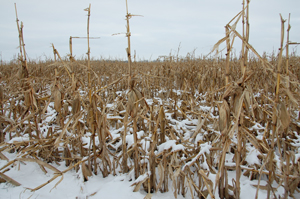 The
The 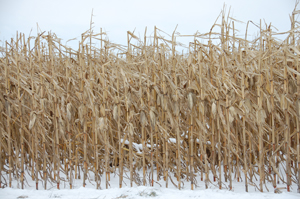 These photos are two different fields I saw along the road between Cullom and St. Anne that showed a pretty stark contrast in standability. No idea of who the farmers are who own those fields, what varieties they planted or plant health products they used, but I’d say the farmer with the field in the left photo has a better chance of salvaging a decent crop, whenever that may be.
These photos are two different fields I saw along the road between Cullom and St. Anne that showed a pretty stark contrast in standability. No idea of who the farmers are who own those fields, what varieties they planted or plant health products they used, but I’d say the farmer with the field in the left photo has a better chance of salvaging a decent crop, whenever that may be. 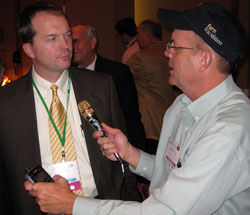 To tell us what’s new with John Deere I spoke to Matthew Arnold, Sr. Marketing Representative. Matthew was attending the NAFB Trade Talk to discuss the
To tell us what’s new with John Deere I spoke to Matthew Arnold, Sr. Marketing Representative. Matthew was attending the NAFB Trade Talk to discuss the 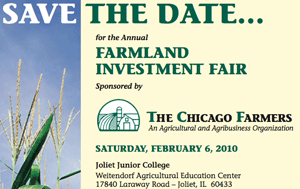 I’m going to be talking about social media and networking at the upcoming Chicago Farmers Farmland Investment Fair. But before getting there I talked about it with Rich Schell,
I’m going to be talking about social media and networking at the upcoming Chicago Farmers Farmland Investment Fair. But before getting there I talked about it with Rich Schell, 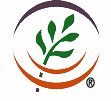 We had a great holiday week
We had a great holiday week  What’s new with Alltech? That’s a good question and one I posed to Billy Frey at the NAFB
What’s new with Alltech? That’s a good question and one I posed to Billy Frey at the NAFB  The National Association of Farm Broadcasting recently released its latest Internet Usage Study. Cindy spoke with Ted Haller
The National Association of Farm Broadcasting recently released its latest Internet Usage Study. Cindy spoke with Ted Haller  The survey explores producer activity and preferences in accessing the Internet for agricultural business information, as well as use of texting and social media. Specific to broadcaster interests, it also probes interest in e-newsletters and the preferred content of agribusiness-focused Web sites.
The survey explores producer activity and preferences in accessing the Internet for agricultural business information, as well as use of texting and social media. Specific to broadcaster interests, it also probes interest in e-newsletters and the preferred content of agribusiness-focused Web sites.